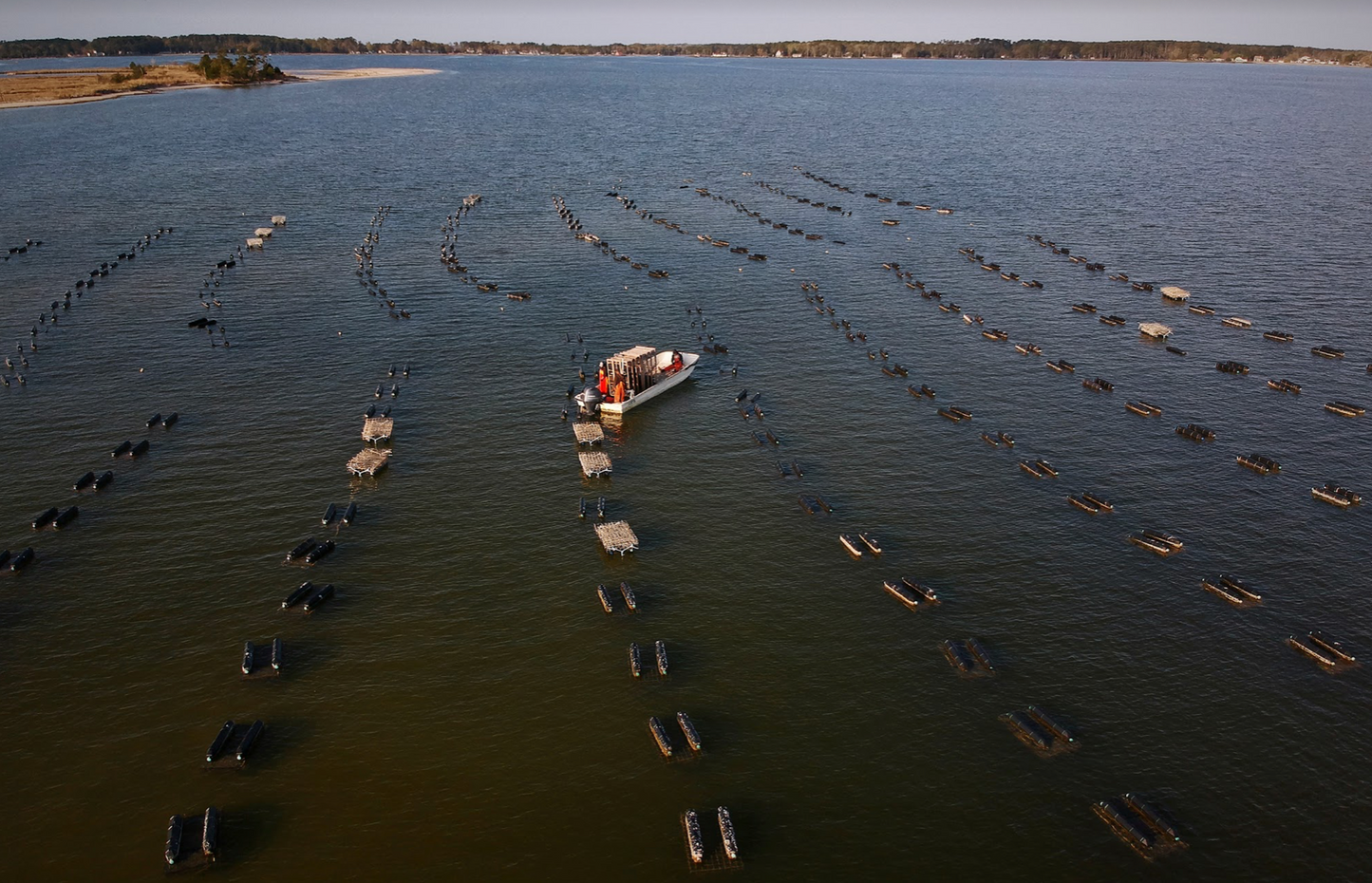
Everyone has an opinion about oysters. Whether you love eating them or not, it’s hard to deny their amazing impact on the areas where they’re grown. Unlike a lot of other animal agriculture, oysters actually help reduce emissions and the overall burden on ecosystems. This is due to the fact that they don’t produce methane during their digestive cycles.
Unfortunately, oyster reefs are declining globally. For example oysters in our area, the Chesapeake Bay used to be so large that they would occasionally sink ships. Now, they have receded to the point that many farms and conservation groups, including White Stone Oysters, are actively working to restore the reefs. Many estimate the oyster population is 100 times smaller than it was just a couple of centuries ago.
However, new evidence suggests that oyster farms that harvest before the oysters reach 18 months actually have dramatic positive effects on their local ecosystems. As a practice, we tend to do exactly this and it’s our hope that as a result, our farm is creating a positive benefit for the area.
By harvesting before 18 months, the filtration effects of the oysters are maximized, while the other effects of human activity, like setting cages and harvesting are minimized. This means that there’s the least amount of disturbance to an area while still filtering the largest amount of water possible, resulting in cleaner water for surrounding species.
On average, oysters can filter more than 50 gallons of water a day. This reduces the amount of nitrogen and sediment along with other nutrients out of the water. Unfortunately, due to the decline in population, what once took a week now takes a year. Oyster populations are so low that they simply can’t keep up with the volume of water that has to be filtered.
However, according to the Chesapeake Bay Foundation, thanks to oyster farms like ours, as well as restored oyster reefs in areas like Harris Creek on Maryland’s Eastern shore oysters are making a comeback and are starting to be able to keep up with the demand.
What this means is as many as 20,000 bags of fertilizer (nitrogen) are being removed from the Chesapeake Bay watershed annually, a service valued at more than $1.7 million dollars.
It’s our hope that our farm is making a contribution to this continued effort and that the bay will continue to rehabilitate and be able to grow and support even more life.
Want more information? Visit the Chesapeake Bay Foundation or check our blog. Show your support by picking up some White Stone Oysters now.
← Older post Newer post →
